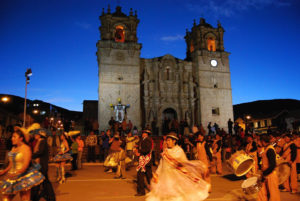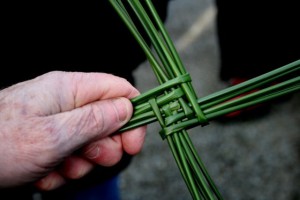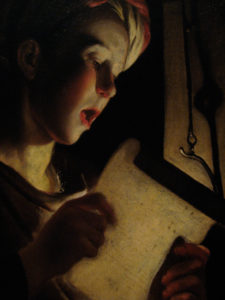Throughout Mexico tonight, the dinner table will, for many, include tamales and hot chocolate, while in many parts of Europe, crepes will be on the menu. And at sunset, we’ll light every lamp in the house. It’s Candlemas. We are emerging from the darkness of Yuletide as the seasonal round of the year shifts from winter toward spring.
Candlemas is the day of blessing of candles in the Church, forty days past Christmas, with great processions of candles lit and born aloft, a light for the world. It is known as well as Purification Day, which comes out of an old Jewish tradition: forty days after the birth of a son, mothers would go to the temple to be purified. You might think of it as renewal, fitting for this time of year, the approach to spring. Not without coincidence, it was just yesterday, as Imbolc began, that the earth goddess was renewed as well, as our planet is now halfway on its yearly journey between the solstice of midwinter and the equinox of spring. And so the story goes that Mary went to the temple to be purified, carrying her newborn son, and it was there that she met the elders Anna and Simeon. Simeon recognized the child immediately as the light of the world, and this is the basis for the blessing of candles on this day, and the day’s lovely name.
One of the most beautiful and elaborate Candlemas celebrations is in the city of Puno in Peru. The photo above is of the Candlemas celebration there two years ago. The celebration in Puno and many other places in Peru, Bolivia, and other parts of South America will continue on for the better part of two weeks.
Candlemas is perhaps the most well known weather marker of the year: Here in the US, Candlemas isn’t much on our radar, but we do know the day as Groundhog Day. If Punxsutawney Phil sees his shadow as he crawls up out of his burrow, it’ll mean 40 days more of winter; if he sees no shadow, then it will be an early spring. This weather lore comes out of much older weather marking traditions related to the Second of February, but which all seem to offer the same wisdom––that a bright and sunny Candlemas Day means a longer winter, while a dark and cloudy one means welcome warmth will soon be on its way:
If the sun shines bright on Candlemas Day,
The half of the winter’s not yet away.
Tomorrow, the 3rd of February, brings St. Blaise’s Day. St. Blaise protects against maladies of the throat. On his feast day, priests will bless each member of their congregation by invoking a prayer to St. Blaise while holding two unlit candles in one hand about the neck of each person receiving the blessing… surely related to Candlemas, too. My mom and dad got married at St. Blaise Church in Brooklyn in 1949. It was my grandparents’ neighborhood parish, a small church. And so we have some fondness for St. Blaise. Ah, but that is tomorrow. Today, though, when we awake, we’ll see what that old groundhog says about winter this year. We shall see what we shall see, and it will be what it will be. The weather is beyond our control. But we can, at sunset, run about the house and light every lamp, for a few minutes at least, and illuminate our world.
Image: Candlemas at Puno, Peru by Pavel Špindler, 2016 [Creative Commons], via Wikimedia Commons.


